training - consulting - facilitating

get answers to some common questions


Calibration
-
Equipment that performs tasks where measurement or monitoring is important need to be periodically calibrated to ensure they are performing to specifications.
-
Calibration is more than just inspecting equipment, replacing worn parts and performing maintenance. Calibration is a specific exercise conducted to determine if the equipment is accurately performing the task that it is designed for.
-
Calibration of equipment can be achieved by comparison with a known standard quantity, using a known parameter or by calculation.
-
Equipment calibrations that may need to be done on commonly used farm equipment include:
-
•chemical spray equipment
-
•scales for weighing bulk or packed product
-
•coolroom temperature gauges
-
Chemical application equipment
-
Agricultural chemical effectiveness in controlling pest and disease depends upon the correct rate of application. The correct application rates are identified through research trials on crops using the chemical and various equipment types. The rate specified on the label has been shown to control the target pest or disease while minimising the risk of adverse impacts on the environmental or food consumer. Application rates are usually expressed on an area basis (per hectare), so it is important that chemical application equipment be calibrated to ensure the correct chemical rate is used.
-
Chemical application equipment may be out of calibration for a variety of reasons, including:
-
•wrong nozzle type
-
•variable discharge across nozzles
-
•inaccurate travel speed
-
•improper height settings (boom)
-
•inaccurate pressure gauges
-
•pressure drop across the system
-
•system leakages
-
Conducting a calibration will identify if there is a problem with the equipment that may lead to an incorrect chemical application rate. This particularly important for powered equipment over larger areas as any significant variation can be costly for the operator.
-
The following calibration spreadsheets for common chemical application equipment can be used to check if the equipment is calibrated:
-
Scales
-
The recorded history of scale use dates back to ancient Egypt where the simplistic equal arm balance on a fulcrum provided the means to compare the weight of objects.
-
Scale calibration requires objects of known weight as a reference point to check scale accuracy. The object of known weight is referred to as a ‘standard weight’ and the placement of standard weights on the scale will reveal the scale accuracy (i.e. the ability of the scale to provide a result that is as close as possible to the actual weight).
-
The standard weights used to check scale accuracy should ideally be of a similar weight range to what the scale is weighing. For example, a 10 kg weight should be used to check the accuracy of scales used to weigh packages of approximately 10 kg. Standard weights should also be made of a material that is stable over time and does not rust or corrode in any way, affecting its mass.
-
Repeated placement of a standard weight on a scale to check the scale reading will provide a test for scale ‘precision‘ (i.e. the same reading each time the standard weight is placed on it).
-
Depending on frequency of use and quality of equipment, scales should be calibrated at least annually to ensure they remain accurate and precise.
-
Temperature
-
Thermometers have two essential components - a temperature sensor where a physical response to a change in temperature occurs and a means of converting that response into a numerical value.
-
Traditional bulb thermometers contain coloured liquids (mercury or alcohol) in their base that expand or contract in response to temperature change. The temperature is read from a graduated numerical scale along a tube that the liquid expands into.
-
A thermocouple thermometer is a device consisting of two different metal alloys that produce a proportional voltage response to temperature. A junction of dissimilar metals produce an electric potential related to temperature and different alloys with predictable and repeatable relationships between temperature and voltage can be used for different temperature ranges. Corrosion resistance properties may also be important when choosing a thermocouple. The temperature sensor can also be connected by wires to a measurement point at some distance away from the point of measurement. Thermocouples are widely used in science and industrial applications.
-
Infrared thermometers measure a part of the thermal radiation spectrum (sometimes called blackbody radiation) emitted by an object. They are sometimes called laser thermometers (when a built in laser pointer helps identify the target area) or non-contact thermometers (as temperature can be measured without physical contact with the target). These may be recommended in the food industry but should not be relied upon exclusively as false readings can occur near ambient temperatures, when near other objects reflecting significant thermal radiation or interference from the person holding the thermometer.
-
Temperature reference points in the degrees Celsius (oC) temperature scale that can be used for calibrating thermometers are:
-
•0oC - melting ice in water slurry
-
•100oC - boiling water (at standard atmospheric pressure)
-
For most on-farm temperature calibration requirements the 0oC reference point could be used for calibrating coolroom temperature sensors/gauges.
-
Dry and wet temperature controlled blocks are typically used in industrial applications to calibrate temperature sensors that cover a wider range of temperature measurement requirements.
answers to some frequently asked questions about calibration
to find out more - simply click on the icon links on these pages or click on the documents to download the files
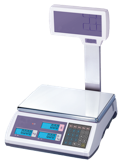

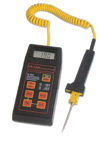
bulb thermometer
thermocouple probe thermometer

infrared, non-contact thermometer

set of standard weights
bench scale
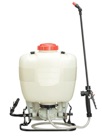

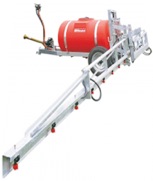
The ‘Fahrenheit Scale’ (1724) references three fixed points of temperature: the lowest a mixture in equilibrium of ice, water and ammonium chloride (a salt) taken as 0°F; when still water starts to form ice on the surface as 32°F; and a thermometer placed under the arm or in a mouth (body temperature) as 96°F.
The ‘Celsius Scale’ (1742) is now the most commonly used scale (except USA)and has replaced the Fahrenheit Scale in most countries - melting ice and boiling water are key reference points
The ‘Kelvin Scale’ uses the same gradations as Celsius but covers the thermodynamic temperature range. ‘Absolute zero’ (0 Kelvin) is -273.15°C - the temperature at which thermodynamic motion ceases
Click on the type of spray equipment to download a MS Excel spreadsheet - enter equipment and label information to calculate and print a calibration
boom sprayer
nozzle pattern should provide good coverage
knapsack sprayer
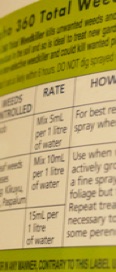

air blast sprayer
© 2019 Frontline Services Australia Pty Ltd | ABN 41 136 738 997 ACN 136 738 997 | E: info@frontlineservices.com.au
